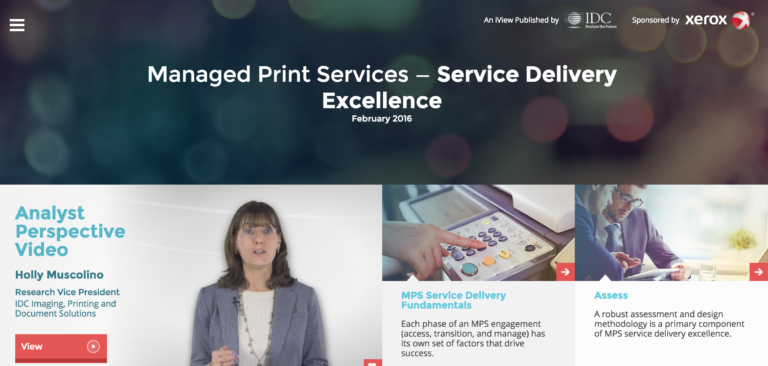Guest post by Kerry Sanders, Vice President, Global Marketing, Xerox Corporation
So how is bimodal IT working out for you? Are you livin’ the dream or your worst IT nightmare?
Gartner describes bimodal IT as “the practice of managing two separate, coherent modes of IT delivery, one focused on stability and the other on agility.” Another definition from SearchCIO describes “an approach that answers an enterprise’s need for both stable and agile IT systems.” Clearly, the tension of managing in two different directions creates a distraction and a drain.
Perhaps no other department is challenged in this way. We don’t hear much about bimodal Finance or bimodal HR, and that might make it hard for other LOBs to feel much sympathy for IT. They don’t understand how exhausting and expensive it is to manage what could essentially be separate processes, platforms, budgets and staff.
The Digital Twist
Bimodal IT really isn’t new. IT departments have long had to manage both the old and the up-and-coming. What’s different about this version is the digital factor. Digital Transformation puts added pressure on IT departments to bring their organizations into the digital marketplace, but oh, don’t let anything else slip along the way!
As you’re racing to bring fresh innovation and up-to-date security to your customers, your legacy systems and practices still support a big chunk of your organization. For the time being, you must manage both, but if you have a Managed Print Services (MPS) contract, you have a surprisingly good resource not just to cope with bimodal IT, but build on it.
MPS and Bimodal IT
MPS brings tools and expertise to help you in both areas – stability and agility. Here’s how.
Current State Stability Plus Funding for Business Agility
As LOBs and the mobile workforce demand more innovation and services from IT, the IT budget itself is shrinking. Although IT may have one of the largest budgets, running costs and legacy apps chew up the majority of it.
A lot of IT organizations would happily devote time and resources to business agility, but can’t afford to because just maintaining the status quo eats up the budget and labor. Then when the enterprise comes to IT seeking innovation and digital transformation, there’s very little left to pay for it. Funding is a leading cause of innovation poverty in enterprises. IT must find some way to squeeze running costs to fund innovation. MPS and document management provide a solution.
What if savings enabled by MPS could help fund innovation initiatives? It’s a realistic plan. MPS and document management are proven ways to drive significant savings in IT costs and hours. Through fleet optimization and management efficiency, MPS relieves the administrative burden and reduces expenses in fleet and document environments. The savings generated by MPS – up to 30% as we all know – can in turn be used to help fund innovation.
A Ready Platform for Innovation
Do you have an MPS contract and hundreds if not thousands of MFPs with a user interface to authenticate users and customize apps? If so, you already have a platform for innovation. When you can build onto your MPS environment to improve workflow and manage documents, you have one less platform to deal with on your innovation journey.
Does your MPS provider offer document analytics and workflow analysis to understand your processes and users? This data reveals opportunities for improvements in the traditional space, and also spotlights potential innovation. MPS capabilities can help you deal with the challenges of “bimodal documents,” the hybrid digital and paper environments that also perplex IT as you try to move forward. Hybrid document environments are a reality, as business documents often go from analog to digital multiple times in their life cycle.
How an MPS Partner Can Help
What should you look for in a Next Gen MPS provider who can help you navigate bimodal IT? A robust portfolio is essential to maximize savings and optimization for existing environments and offer a variety of capabilities to drive innovation. The vendor doesn’t have to be limited to office technology. It could also include production print and graphic communications for innovative marketing strategies. Global capabilities are certainly needed to scale these efforts, as well as proven expertise.
The goal of Next Gen MPS partners is to steer you along an ever-more innovative path to a digital workplace. Progressive Next Gen MPS programs are designed take you through the three stages, from assess and optimize, to secure and integrate, to automate and simplify.
MPS can be a unique resource for day-to day-challenges, as well as your path to greater automation and digital transformation. The benefits of MPS span both sides of bimodal IT. It creates cost reductions to make more funds – and a common platform — available for IT innovation in the areas of security, mobility, epublishing and more.
Now the question is: “Have I really looked at MPS as way to free up money, and MFPs as platform for innovation?”



